The Look Out, Sir! rules offer up an exciting narrative side to games of 40k, with heroes leading from the front and want-to-be heroes more than willing to take a bullet for them.
The existing rules mechanic can however be tedious to work out, involving multiple single rolls of a die to resolve. This can certainly slow down the game, and make these heroic moments more annoying than exciting.
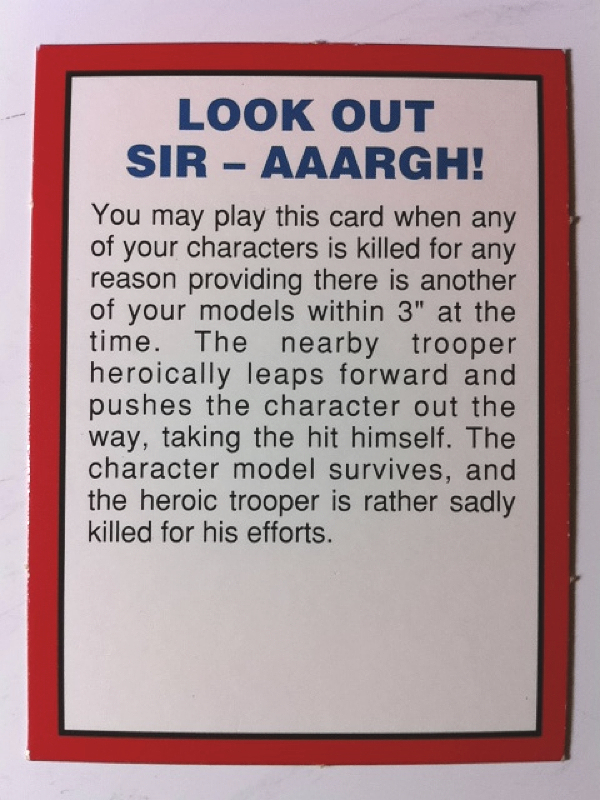
The LOOK OUT SIR mechanic was first introduced way back in 2nd edition.
With the release of the Errata, Ammendments and FAQs, a major change to the published rules for this rules mechanic has occurred.
On a successful Look Out Sir! roll, the closest model has the wound allocated to them.
This presents the opportunity to streamline the dice rolling to resolve these events, as follows:
Choose two different colour/sized dice. Nominate one as the Look Out, Sir! Test, and the other as the Saving Throw.
Roll both dice together and determine if there are any casualties.
If the Saving Throws are the same for the Character and the unit, and the Save is made, you don't care about the result of the other dice. If the save is failed then check to see the result on the Look Out, Sir! die.
Using this method should result in a quicker resolution to this aspect of the Shooting Phase.
Look Out, Sir! Dicing with death.
Since the origin of Astronomi-con, the event has featured scenarios with movable objectives. Coming up with a set of rules to cover how these objectives are manipulated over the course of a game is somewhat complex - which may be why we have not seen anything like this from the GW Design Studio.
Fear not, the Astronomi-con Organizers have gone to great lengths to put together an updated set of rules for objectives which can be captured and moved by models on the 40k battlefield.
+++
The rules are organized into two major sections. The first section are general rules for how to handle mobile objectives, and the second section includes special additional rules for various types of mobile objectives.
Movable Objectives - General Rules
Claiming – A Movable Objective can be claimed by any non-vehicle model or Walker with a suitable ‘hand’ ending its movement phase in base contact with it. A Movable Objective may also be claimed during a Sweeping Advance by ending their movement in base contact with it. Once claimed, the Movable Objective remains in base contact with the model as it moves. Only one Movable Objective can be carried by a single model. Only the model carrying the Movable Objective may be in base contact with it.
Movement – Models carrying a Movable Objective cannot run or fire any weapons and if they move more than 6” must take a Dangerous Terrain Test. The exceptions are Monstrous Creatures, Flying Monstrous Creatures, Walkers and Transports. Bikes or Jetbikes carrying a Movable Objective cannot Turbo Boost. If a model is removed as a casualty while carrying a Movable Objective, it remains where it is and becomes unclaimed.
Transports – When a unit carrying one of more Mobile Objectives embarks into a transport, the transport itself becomes the carrier of the Movable Objective(s). Each Movable Objective counts as taking up one additional model worth of transport capacity while in a transport vehicle. If a transport carrying Movable Objectives is wrecked or explodes, all Movable Objectives are lost and can no longer be claimed. Transport vehicles carrying a Movable Objective may fire their weapons normally. When a transported unit disembarks it may leave Mobile Objectives in the transport or a model from the unit may claim it as they disembark and carry it.
Handing-off – Movable Objectives can be handed-off to another suitable model providing both models are in base contact at the end of the movement phase. Place the Movable Objective in base contact with the new claiming model. Movable Objectives can also be handed-off into an empty transport vehicle provided that the carrying model is in base contact with one of the vehicle’s access points. Handing-off can only occur once each phase.
Dropping – Normally, Movable Objectives can be dropped at either the start or end of the movement phase and are placed within 1” of the model that was carrying it and not in base contact with another model and it becomes unclaimed. They may also be dropped during the Assault Phase as detailed below. If a model carrying a Movable Objective is forced to fall-back, it drops it immediately before the move is made.
Charging – If a unit with a Movable Objective declares a charge, the model carrying it drops it immediately. If a unit with a Movable Objective has a charge declared against them, the model carrying it may choose to drop it prior to resolving Overwatch or hold on to it and forego its Overwatch fire. If the charge is successful it is immediately dropped and combat ensues. Transport vehicles carrying a Movable Objective are unaffected by charges.
Movable Objectives - Types
Cumbersome – May be claimed by a single model, but an additional model is required to move these objectives. Models carrying a Cumbersome Objective count as moving within difficult terrain. Monstrous Creatures and Walkers with a suitable hand are the exception to these restrictions. Cumbersome Objectives count as Bulky models when being transported.
Compact – May be claimed by a single model. Compact objectives take no additional space in a transport, and models carrying a compact objective suffer no additional penalties for movement, shooting, or assaulting.
Fragile – These objectives cannot be moved more than 6” each turn.
Unstable – The first time a model moves to claim this objective, roll a D6. On a 1, the objective explodes! Place a 5” template centred on the objective and all models touched suffer a S7 AP4 hit. The objective is then removed from play. If the objective did not explode, then the model claims it as normal. Unstable objectives are only checked once.
Damaged – At the end of the game, roll for each Objective you have in your possession. On a roll of 1, the objective has been damaged and is worthless. The Objective is destroyed!
Vital – At the end of the game, roll for each Objective you have in your possession. On a roll of 6, the objective is vital and is worth two normal objectives!
+++
The types listed above can also be combined for more interesting scenario design. With a significant number of Astronomi-con scenarios which use mobile objectives, having a comprehensive set of rules for how such objectives are handled is something we felt was important to revisit.
Mobile Objectives - Good to go!
With the arrival of sixth edition, there are a number of new elements to the game which tournament organizers must make decisions on. One of these, is the use of Fortifications.
There are many reasons a player might add a fortification to their army. The most base of these would be for the tactical advantage gained by their inclusion. Another aspect may be for defending against units like flyers with the Skyfire weapons available to them.
From an organizer's perspective Fortifications present some challenges. Should they be allowed in the tournament at all? Should there be any restrictions on which are allowed? How do they get deployed?
With terrain usually fixed in a tournament setting - either to expediate the game, or for thematic purposes, or both - Fortifications can really throw a wrench into a thematic scenario or simply be too large to fit onto a table already covered in terrain. They may also end up unbalancing a scenario or even affecting the way third party units act due to their positioning.
Astronomi-con has always tried to embrace all types of armies and rules. So we decided to go with a hybrid approach and allow only the Aegis Defence Lines and Imperial Bastion for players to use as Fortifications in their armies.
These provide the smallest footprint on the table and also allow the purchase of Skyfire weapons to give players a tool to help deal with flyers. One other aspect was to enable our member to expand their collections and modeling skills with the idea of converting up themed fortifications for their force.
Players will be able to deploy their Fortifications with their army during normal deployment.
These choices will serve as our trial run for bringing Fortifications into play. We will definitely be looking for player feedback with how Fortifications affected their games both positively and negatively.
Fortifications - Defending their use.
Flyers have been a part of the Warhammer 40k game for many years now, ever since the release of the first Forgeworld Imperial Armour books.
Over the years the rules for flyers have evolved quite a bit and now for the first time are incorporated into the core rules.
Most armies have access to at least one flyer unit, whether from Imperial Armour or codex, or recent White Dwarf articles. Other armies can make use of the new allies rules to add a flyer to their force.
Flyers have some great advantages along with a few disadvantages. The biggest advantage is that Flyers are hard targets for most units to hit. With their Zoom rules they gain the Hard To Hit special rule which force all shooting against them to be resolved as snap shots - unless the model or weapon had the Skyfire special rule. The other advantage is that Zooming Flyers cannot be assaulted. They also may fire up to four of their weapons using their full Ballistic Skill if they have moved at combat or cruising speed that turn.
Some disadvantages are that they must begin the game in Reserve, have limited maneuverability and generally have light to medium armour. As vehicles they cannot capture or deny objectives - except in some special circumstances. How to combat flyers should always be a consideration for games where encountering a flyer is likely. Models or weapons with Skyfire should be looked at to shoot them down.
Units like the IG Hydra, Eldar Fire Storm, or Tau Sky Ray provide some immediate help. But the simple fact is that there are not many viable threats to flyers at this point in time.
Fortifications provide a way for all armies to gain access to Skyfire weapons, with the Quad Gun and Icarus Lascannon.
Flyers are also a real option to help combat other flyers.
Twin-linked weapons are another option, giving you a better chance to roll those sixes you need to bring them down.
Snap fire is going to require a fair bit of luck to do enough damage to shoot down a flyer. Until such time that things like Flakk missiles and other Skyfire weapons are introduced, flyers will be a real threat on the 40k battlefield.
To get the most out of your flyers, they need to be on the battlefield and stay alive. Units that assist with reserves will help ensure that your flyer arrives on turn two. You should target the major threats to your flyer as soon as possible. These would primarily be units with Skyfire ability.
Keeping your flyer on the board is also important so try and set up your flight paths at least a turn in advance.
Flyers with transport capacity are going to draw more fire if they have a unit onboard, so do try and get those passengers into the fight as soon as possible.
For those players which have had opponents with flyers in their armies over the years, combating them will not be a new aspect of the game. For the vast majority, Flyers present a new challenge to meet and ultimately overcome.
Flyers - Death From Above
Selecting a balanced army has in some circles been frowned upon. Many players in previous editions would load up on Troops or more commonly Heavy Support to try and put together a winning combination. The notion of selecting a balanced army - an army featuring selections from all branches of the Force Organiztion chart becomes a more attractive option for everyone with the release of sixth edition.
With the new Endless War missions, the focus is mostly on controlling objectives with only one mission which sees destroying enemy units as the main goal.
The notion of scoring units has also evolved, extending to other force organization selections from just the previous Troops. This also provides a new "tool in the toolbox" when it comes to scenario design for those looking to go beyond what's in the rulebook. Denial units have also evolved and some selections now cannot prevent an enemy from controlling an objective. Most notably, vehicles and swarms.
This shift in how objectives are controlled should now make selecting your army a bit more challenging. Mechanized armies lose a lot of capability for denying objectives, except for the 'Big Guns Never Tire' mission and in 'The Scouring' mission Fast Attack selections count as scoring units.
With a full third of games now played with a short table edge as a player's board edge the ability to maneuver, deep strike, or even outflank becomes a reason to reconsider the effectiveness of some units which may have been left on the shelf previously. With the changes we are now seeing with how the game is going to be played, players will need to revisit how their army is composed.
This shift may see non-competitive armies closing the gap between the lists seen traditionally as more competitive ones. Keeping the more competitive nature of the game in-check will almost certainly lead to more fun for everyone - and more diverse armies on the tabletop.
Army Balance - Levelling the playing field.
The way Vehicle Squadrons operate in v6 has changed dramatically in some aspects, but still retain some of the rules introduced in the previous edition.
Some of the things that remain the same are the 4" coherency, and the ability to see and shoot through members of their own unit. Beyond these points, the way squadrons fight in v6 is very different.
Squadron models work like other units in v6 where some models can remain stationary while others can move as long as they remain in coherency. This allows stationary units to maintain a high rate of fire while other members of their unit advance or withdraw. This also includes moving Flat Out. This kind of maneuvering allows for squadron members to put distance between potential enemy assaulting units. It also allows for squadron members which have suffered damage to move to a position where other squadron members can draw fire away from them - all while maintaining an improved rate of fire.
"When shooting at a squadron hits must be resolved, one at a time, against the model in the squadron closest to the firing unit - exactly like you would resolve wounds on a normal unit."
Some sutuations can arise with Vehicle Squadrons that are not covered directly by the rules.
There appears to be no option for Focus Fire (page 18) when it comes to shooting at vehicle squadrons. Another situation is when shooting at a vehicle squadron that has one or more models which are out of line of sight, or with the nearest model out of line of sight.
In these cases perhaps the best way to resolve things is to take to heart the wording in the Shooting At Squadrons section (page 77): "...roll To Hit as normal." and "...exactly as you would resolve Wounds on a normal unit."
This would then permit things like Focus Fire and to enable models in a squadron which are out of line of sight from the shooting unit to not be eligible to have hits allocated to them.
With the way hits are resolved, damaged squadron members can be moved to a position where hits in future turns are allocated to a closer squadron member -this goes a long way to increase the survivability of the unit. Another important change is the ability to Abandon Squadron-mates should they become immobilized. In the previous edition, such an occurance would effectively destroy the squadron member. Now these models form their own unit once left behind and can still contribute, or remain part of the squadron until abandoned.
With the changes to the way shooting is resolved, squadrons no longer need to worry about their shooting effectiveness being diluted due to varying strengths and AP of their weapons. Since the player doing the shooting gets to decide in what order the Wound Pool gets resolved in these cases. (page 15 Mixed Wounds).
This makes a big improvement in the effectiveness of a squadron's shooting.
The rules for Assaulting Squadrons and vehicles in general make vehicles more vulnerable to such attacks. Models from squadrons that have enemy in contact with them are going to be the first to be destroyed but a strong assaulting force can quickly turn an entire squadron into wreckage.
Defending a vulnerable vehicle squadron from being assaulted should be an important consideration. Destroying, impeding or simply moving away from such threats to keep your squadron firing is usually preferable than staying stationary and taking the gamble that the enemy will be out of assault range. That being said, ensure your squadron has an escape route available to them.
One core principal as to why to select a squadron is to free up Force Organization slots for other selections. With the advent of multiple detachments this is no longer a necessity, but the improved shooting rules and the survivability of immobilized members may see the revival of these units on the battlefield.
Vehicle Squadrons - A Force Multiplier.
The term Victory Points has evolved into something new with the arrival of sixth edition. For those of you that have been in the hobby for as long as I have, Victory Points used to refer to the points that a unit gives up as it is damaged it destroyed. In some missions those points would be tallied up at the end of the game to determine the winner. The use of Victory Points in the previous edition while still a published mechanic (page 300 v5 rulebook) was in many ways shoveled under the carpet in favour of the Kill Point mechanic - which in the minds of many was too granular to be effective. Astronomi-con continued to use the Victory Points mechanic for their missions which called for these sorts of scoring and still found it to be effective and accurate. It should also be noted that the vast majority of our attendees were in support of using this mechanic. With the arrival of v6, the term Victory Points takes on an all new meaning with the Endless War missions. In an effort to bring the library of Astronomi-con's v5 missions up to snuff we have evolved the old Victory Points system into what we've dubbed: Unit Points. Unit Points (UPs) are calculated as follows:
Units Destroyed
At the end of the game every unit that has been destroyed is worth an amount of UPs equal to its points cost (including the cost of all its extra wargear, vehicle upgrades, etc). Units that end the game falling back or off the battlefield count as destroyed. Units at half strength
At the end of the game every enemy surviving unit that lost half of its initial models or more is worth an amount of UPs equal to half its points cost (including the cost of all its extra wargear, vehicle upgrades, etc), rounded down. In the case of units that start as a single model (Independent characters, monstrous creatures, etc), they are worth half their points cost in UPs if they have lost half or more of their Wounds on their profile. In the case of vehicles, they are worth half their cost in UPs if they have lost half or more of their Hull Points at the end of the game. Special Cases - Vehicle Squadrons are treated as a unit when calculating UPs.
- Combined units like Imperial Guard infantry squads are treated as a single unit with a points cost of all the combined units.
- Space Marine combat squads are treated as individual units with a points cost equal to half the cost of the full squad - regardless of what models are in each combat squad.
- Vehicle Squadrons which abandon a member over the course of a game do not include the abandoned unit in any UP calculation. The abandoned unit forms its own unit and gives UPs as a single vehicle.
Moral Victory?
Each player adds together all of the UPs they have scored by damaging enemy units and any bonus UPs which may have been awarded by the scenario, then the two totals are compared to find the difference in UPs. A difference of less than 10% of the game's point limit (i.e. 150 UPs in a 1,500 point battle) would count as a draw. Should a player score more than this margin, they would be deemed the winner. While the future plan for Astronomi-con scenarios is to ultimately move toward a Victory Points system similar to the missions found in the rulebook, in the short term we will be using the Unit Points mechanic to reduce any confusion on nomenclature with the terms in the new edition - and have evolved the old system into a new tool for updating old scenarios and designing new ones.
Unit Points - Things are looking UP.
The sixth edition of Warhammer 40,000 introduces the concept of The Warlord to games. In previous editions the notion of your 'commander' has served as a focal point for games, and in many tournaments their demise or survival is often central to many scenarios.
Now we have a defined set of rules for how to identify The Warlord as well as grant them a unique perk. See page 111 in the rulebook.
The Warlord is defined as always being the HQ choice character with the highest Leadership. In the case where you have more than one character are tied for the highest Leadership, you can choose among them which is your Warlord.
The rulebook places a strong emphasis on Forming A Narrative but for some armies this presents a few odd situations which seem counter to the narrative players may want to form. Imperial Guard will find that their Lord Commissar will be forced to be Their Warlord, when the leader of the Command HQ would be the more natural choice. Other armies which for story purposes would want to portray a lesser character in charge and leading a force with another higher leadership character in-tow loses that storytelling device.
The Warlord also gains access to a random trait from three categories. Command, Personal, and Strategic.
In the Eternal War missions found in the rulebook, the decision on which traits
players roll for happens after the mission has been determined. So, this can
factor into which trait table you roll on.
Command Traits tend to affect units within 12" of your warlord. Personal Traits influence the Warlord and the unit they join. Strategic Traits influence your army and how it performs on the field of battle.
The term trait is a somewhat misleading term as these abilities have no sustainability from game to game, and due to their random nature may be of no help to your force while your opponent may gain substantial advantage - simply due to the roll of the dice. These abilities do add some additional flavor to games but may leave some with a bad taste in their mouth.
If these abilities could be simply selected before the battle to provide a discernible benefit, and to establish a character's true trait, it may have been a better design choice - but doing so could also lead to abusive play.
Players may opt to choose to do different things for campaigns or linked games, etc. As always the rules should serve as a starting point and serve to inspire and encourage players to be creative!
The Warlord - Rank has it's privlidges.
The Skyshield Landing Pad is a wonderful terrain piece which has been available for some time now. It is a fairly large kit which measures about 15" x 15" when unfurled and just under 12" x 12" when Shielded. It also stands nearly 4" in height.
As a Fortification this terrain piece is available to any army for 75 pts. With the new rules for fortifications you can take a single fortification for each primary detachment in your force. When playing the Eternal War missions found in the v6 rulebook Fortifications are set up prior to terrain wholly within the owning player's table half and count toward terrain density.
The complete rules for the Skyshield Landing Pad can be found on page 115 of the v6 rulebook. Some of the details I will list here and discuss in a bit more depth.
The Skyshield has two modes. Shielded and Unfurled. In Shielded mode, units on top have a 4+ invulnerable save against enemy shooting attacks. When unfurled if a unit deep strikes on top it will never scatter. The choice of adding a Skyshield to your army can provide a number of tactical advantages. Armies which rely on deep striking units could bring units to that point of the battlefield with relative safely, and use it as a means to springboard an attack. If using these types of springboard tactics, consider deploying the Skyshield closer to the middle of the table to hem in your opponent. Also consider placing objectives nearby or even on it for easy access.
Another viable tactic is to use the Skyshield as a defensive strongpoint. In shielded mode, models on top get a 4+ invulnerable save. They also gain some protection from assaults as enemy models must get underneath the platform and use a ladder to get to the top surface or attempt to Assault The Battlements by throwning grenades as detailed on page 96. This tactic is further enhanced by placing the Skyshield in your deployment zone. It can fit in a 12" deployment zone and offer a commanding view of the tabletop. This makes it a great place to deploy heavy weapons and other units which can operate in a static position.
As the top surface of the Skyshield is open terrain if it is set up in your deployment zone even non-skimmer vehicles could be deployed on it. There are a few grey areas with respect to this fortification which I will explore next.
The first has to do with units deep striking on top of an unfurled Skyshield. There is no rule preventing your opponent's models benefiting from these abilities - so the Skyshield may get a bit crowded!
Another point of discussion involves barrage weapons and how they affect shielded units. Since Barrage weapons always assume the shot is coming from the centre of the blast marker it can be argued that these shots bypass the shielded ability. The other side of the coin would be to claim that the shield behaves as a dome and provides protection even against barrage weapons. This is currently supported by the rules as written. Until a clarification for how barrage weapons are affected by these sorts of things, players are encouraged to come to a mutually agreeable conclusion.
Models moving off the Skyshield also raise a few questions. Some units like Jump, Jet Pack, Jetbikes and Skimmers do not need to take Dangerous Terrain tests for moving off an unfurled Skyshield how other units are handled is not covered directly.
As I look at the Skyshield I would opt to handle things as follows:
Infantry models climbing over a shielded or jumping off an unfurled side would also use the Leaping Down rules found on page 95 of the rulebook.
A non-skimmer vehicle on top of the Skyshield would only be able to drive off if it is unfurled and would also be subject to the Leaping Down rules.
One last thing to consider is using the Skyshield as simply a piece of terrain for your games. The rules for Dilapidation on page 96 cover some aspects, but you can always take things a bit further such as restricting the ability to have all of its features working. Perhaps allowing only cover saves instead of invulnerable saves or restricting the ability to change configurations.
The Skyshield Landing Pad offers a number of tactical advantages to armies and gives players a significant piece of terrain to battle over and around.
Skyshield - A seventy-five point landing.
Sixth edition introduces many new concepts and mechanics to the game. One of these is the addition of purchasable fortifications to one's army.
Of all the currently available fortifications the one that costs the least amount of points is the Aegis Defence Line.
Defence lines are a type of Battlefield Debris which in addition to following the rules of Barricades And Walls which give models behind them a 4+ cover save. In addition units that go to ground behind a Defence Line gain a +2 to it's cover save.
All armies can take a single Fortification for each primary detachment in their force. An Aegis Defence Line consists of up to four long and four short defence line sections. When deployed these sections must all be placed in contact with at lease one other section.
In addition, an Aegis Defence Line may be further upgraded by purchasing a Comms Relay, or a gun emplacement with either an Icarus Lascannon or a Quad-gun.
A Comms Relay allows any player with an unengaged model within 2" of a Comms Relay can re-roll Reserves Rolls and models in cover behind one gain a 5+ cover save. Note that there is no restriction on what reserve rolls can be re-rolled so canny generals may use this to attempt to delay or usher in their reserve forces.
Both the Icarus Lascannon and the Quad-gun fill the same role. They both have the Interceptor special rule which allows the weapon to fire at any one unit that arrived from Reserve. This an exception to the normal shooting rules in that the owner can fire the weapon at the end of their opponent's shooting phase in lieu of shooting in their following turn. These weapons also have the Skyfire special rule which allows them to shoot at Flyers, Flying Monstrous Creatures, and Skimmers with their normal Ballistic Skill. These Gun Emplacements require a model in base contact with it to operate it and allow it to fire and models behind it gain a 4+ cover save.
The Aegis Defence Line provides over 28" of 4+ cover that you can deploy in your half of the table. It is sizable enough that even vehicles can benefit from a 4+ cover save now that at least 25% of a vehicle needs to be covered to count as obscured. Imperial Guard can further improve this with the addition of Camo Netting which grants stealth an improves the cover save by +1, giving such vehicles a 3+ cover save if they remain stationary.
With such a large area potentially covered by the Aegis Defence Line it is important to consider the pitfalls which can result. Be sure to leave enough room for units like vehicles to be able to advance and maneuver around your fortifications. Also models within 2" of the fortification can be assaulted simply by the enemy getting into contact with your Defence Line. Also remember that cover works for both armies and should your force be driven away that the enemy can just as easily use your fortifications against you. Beware of weapons that have the Ignores Cover special rule. Your fortifications won't help you in these cases so such units should become alpha targets if you rely heavily on cover.
The Aegis Defence Line kit comes with the 8-piece barricades as well as a Quad-gun. Note that this can be considered just the starting point for aspiring modelers. Such fortifications can also be converted or scratch built to be more in theme for your army. Those looking to go this route should try to ensure that the dimensions of their fortifications are similar to the original model kit. The goal here should be seen as a way to theme a fortification for their army and not trying to model for advantage.
It should also be noted that the gun emplacements available as options for fortifications are the only way most armies can access weapons with Interceptor and more importantly Skyfire. Until new codices introduce options like Flakk missiles and other weapons with the Skyfire special rules expect to see such fortifications playing a role in army design.
Aegis Defence Lines - They've got you covered.
|
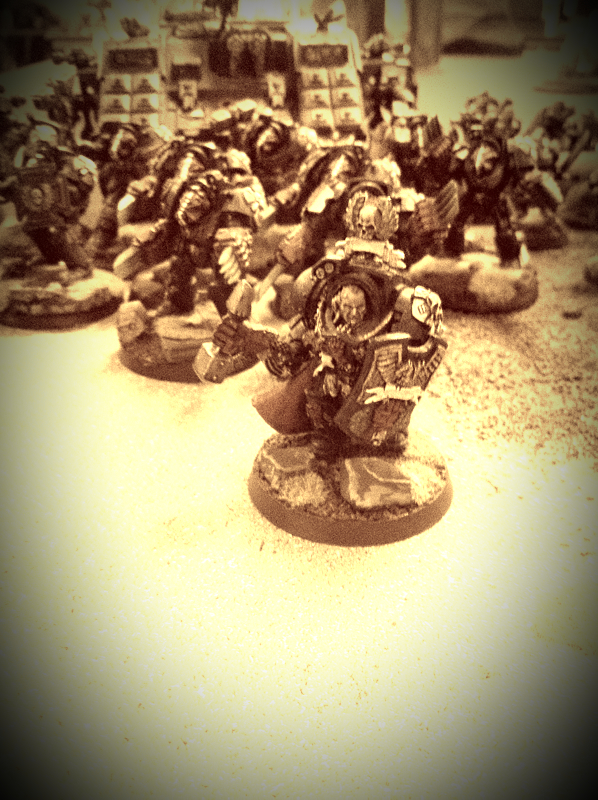

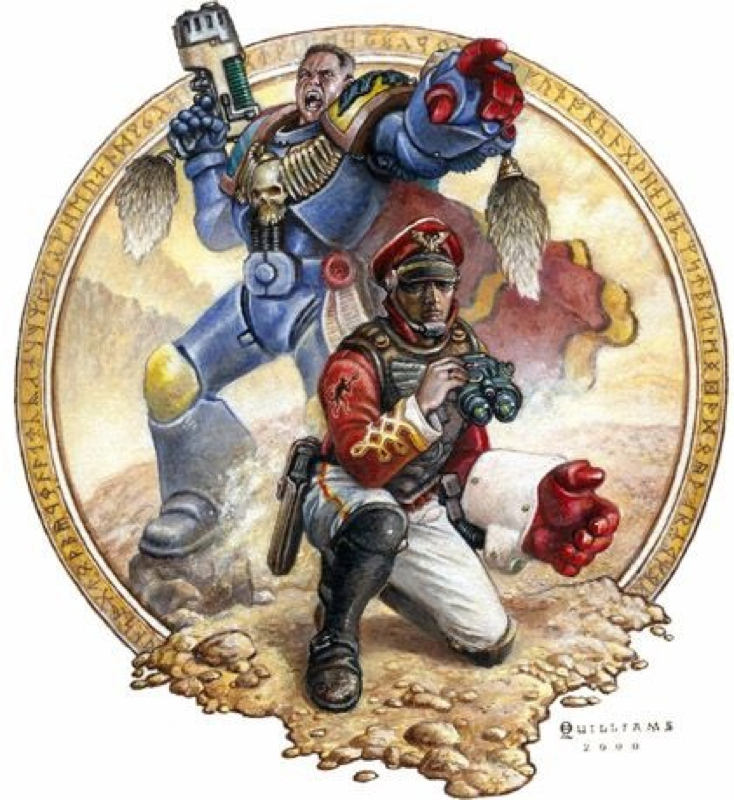
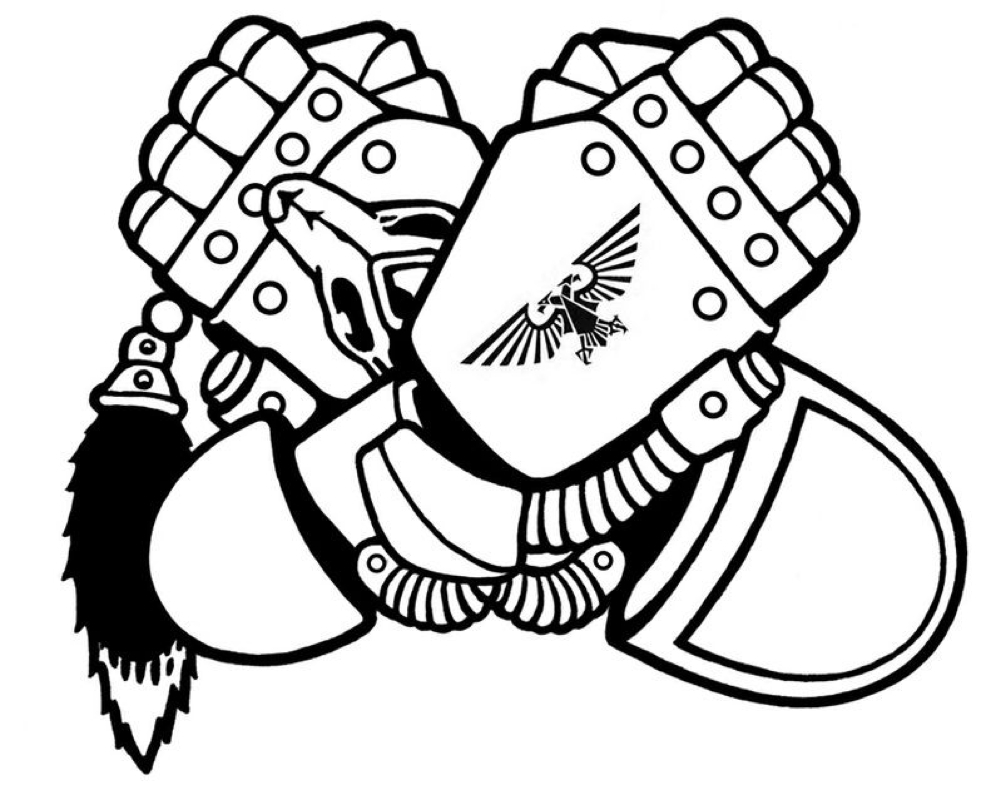
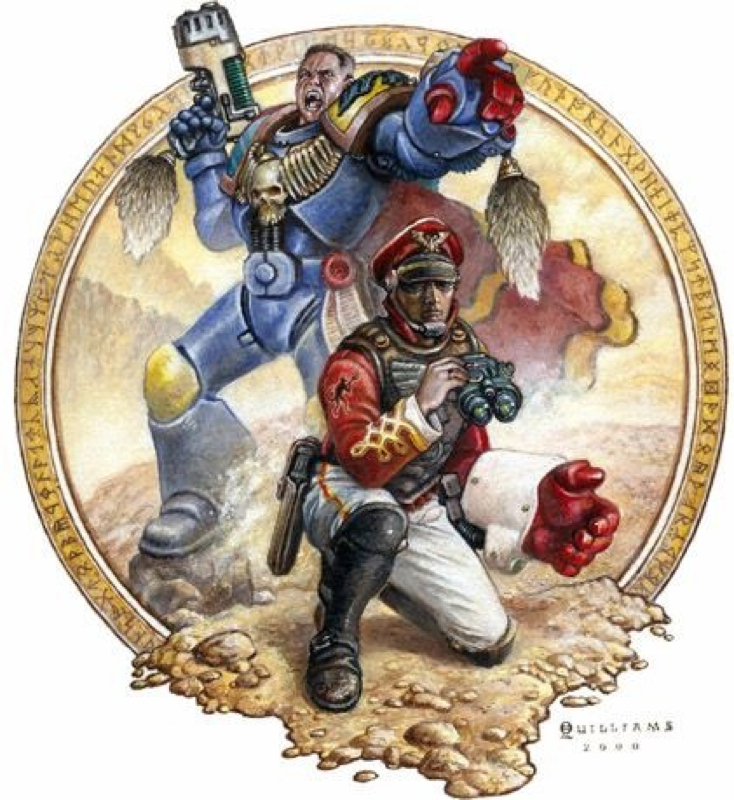
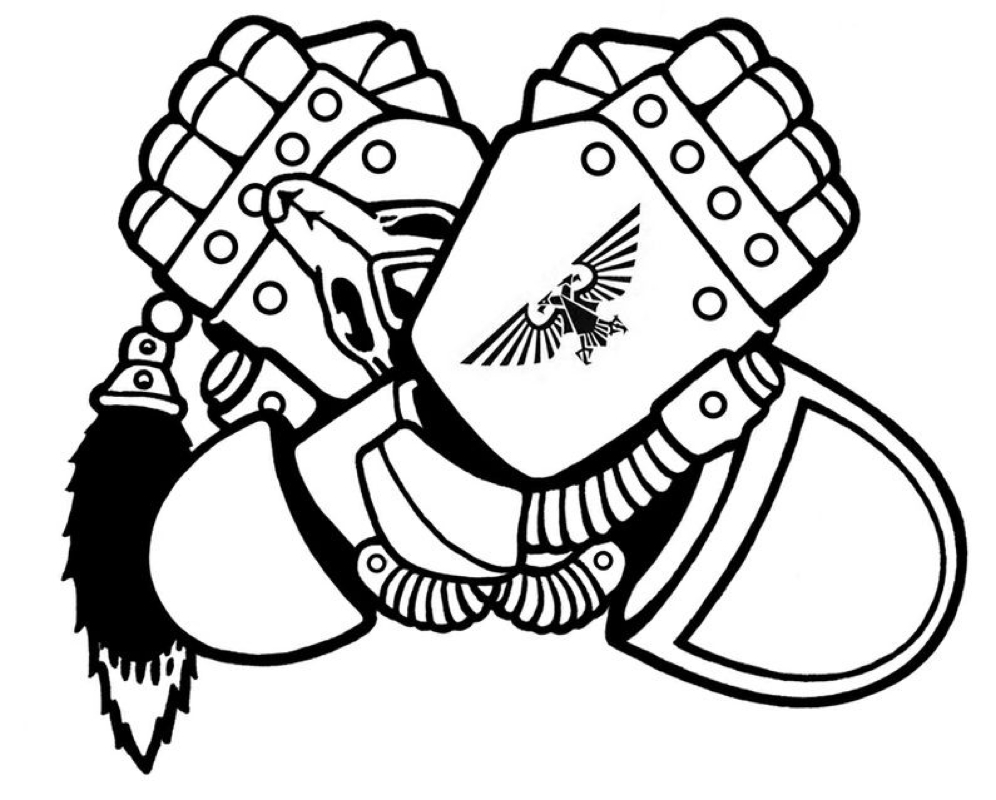
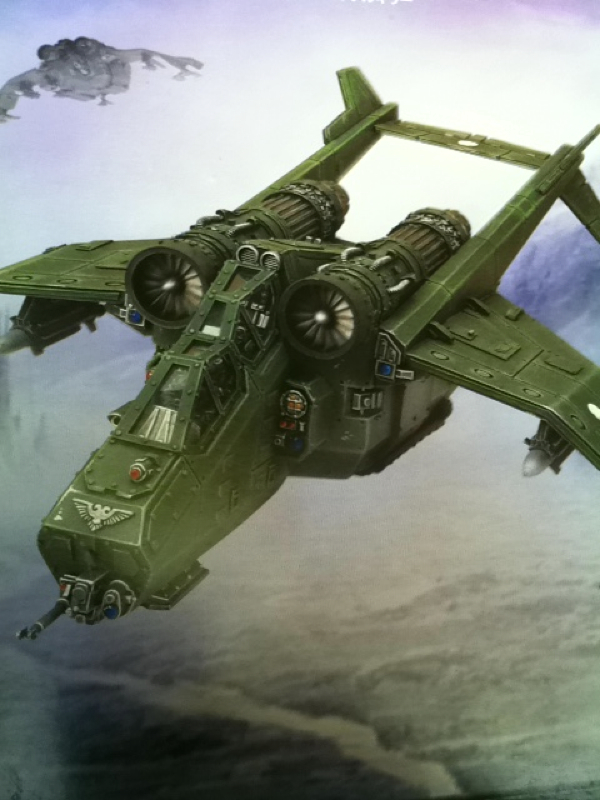
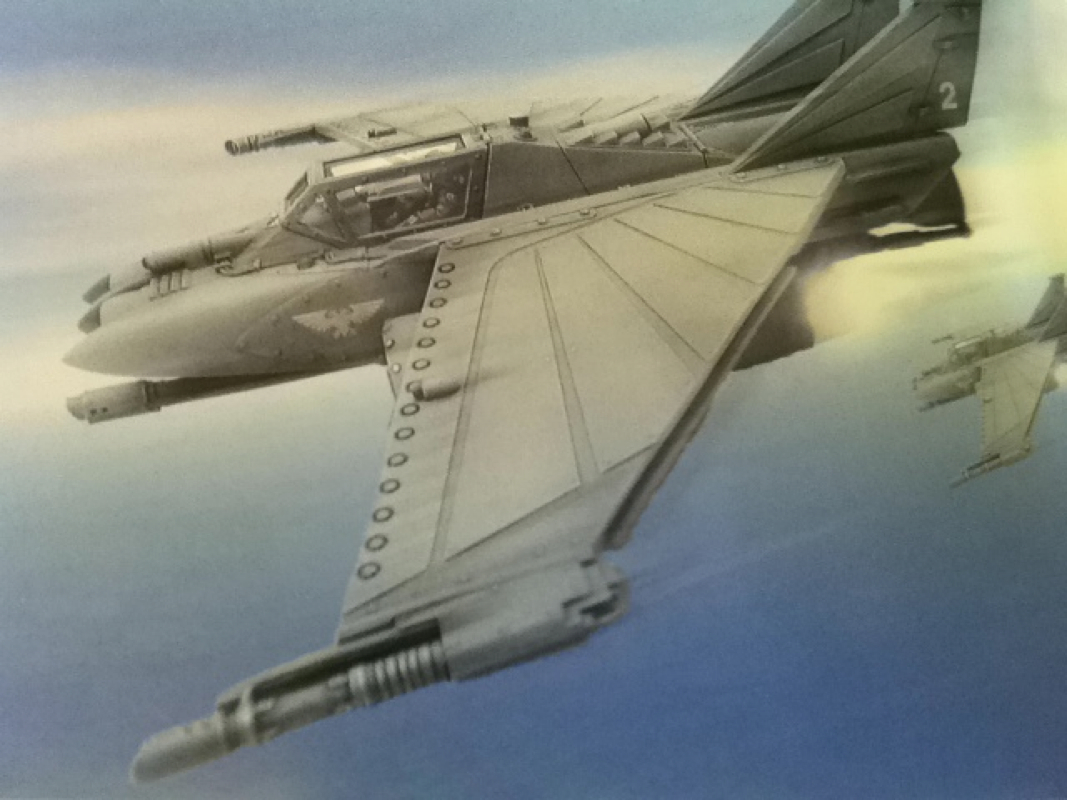

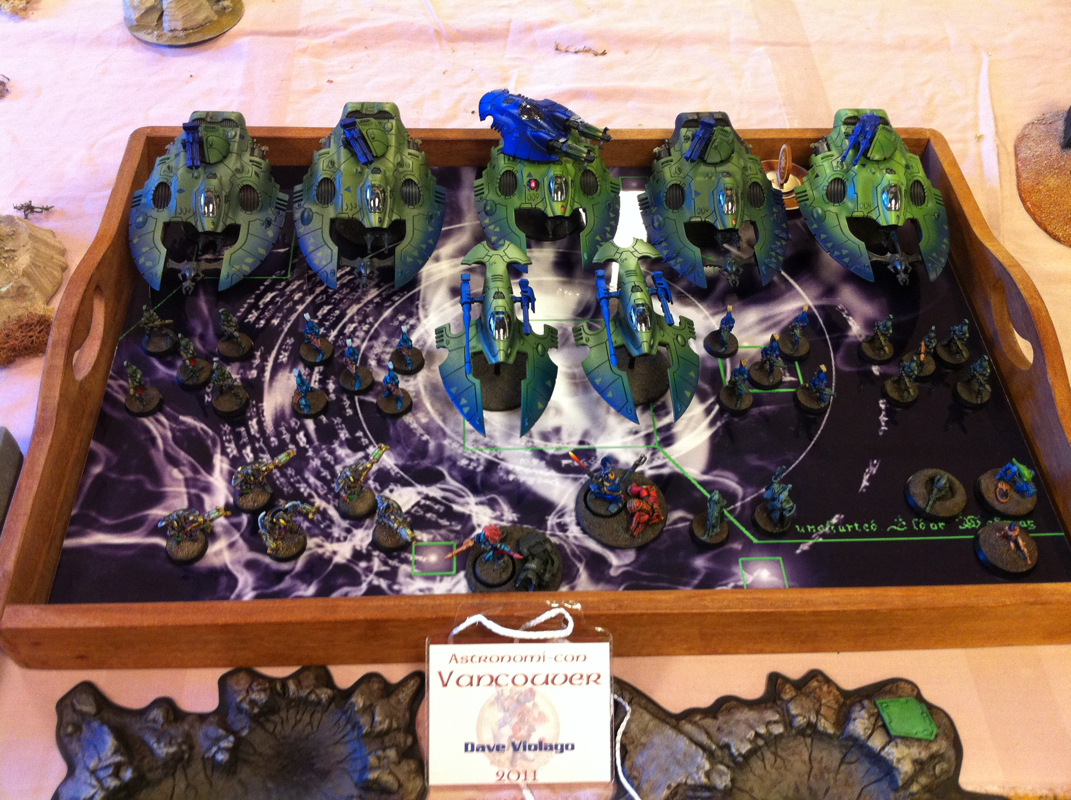
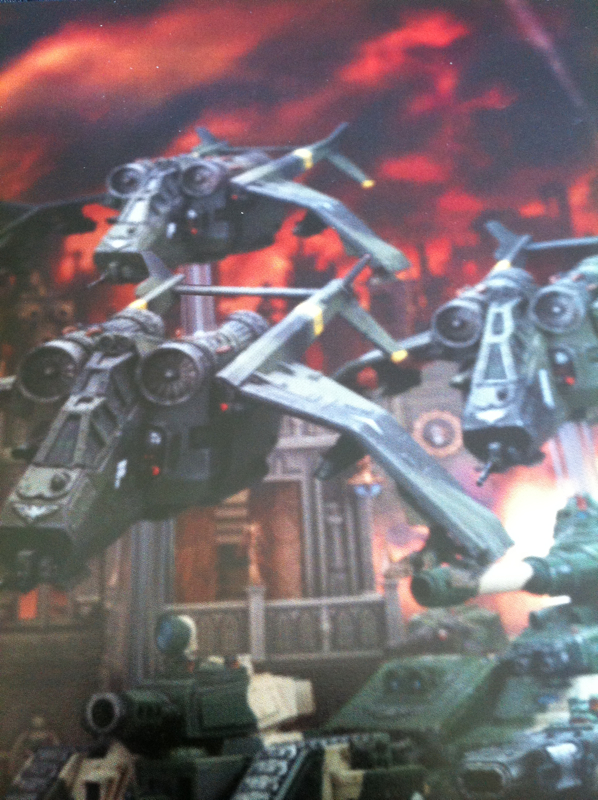

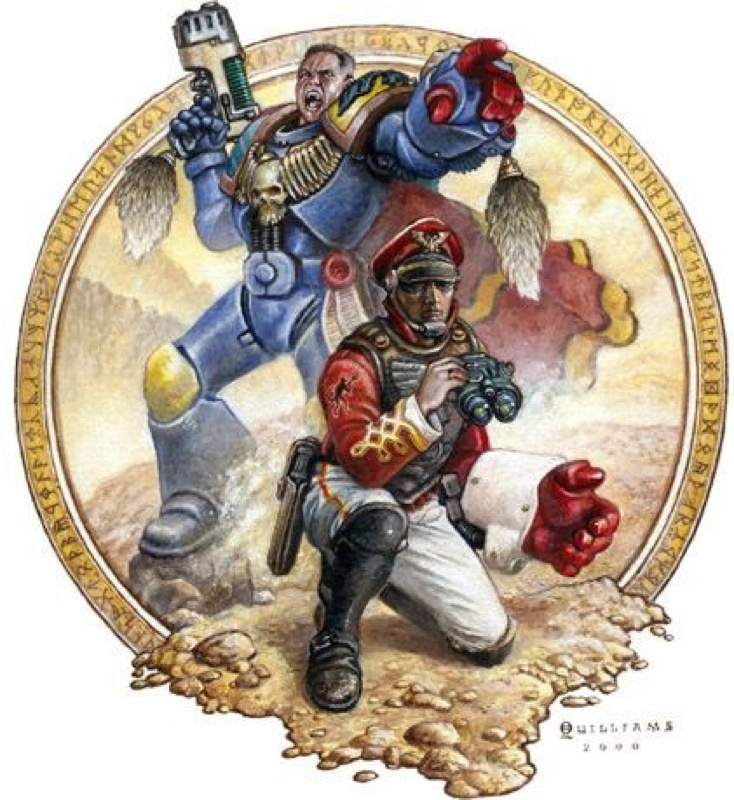

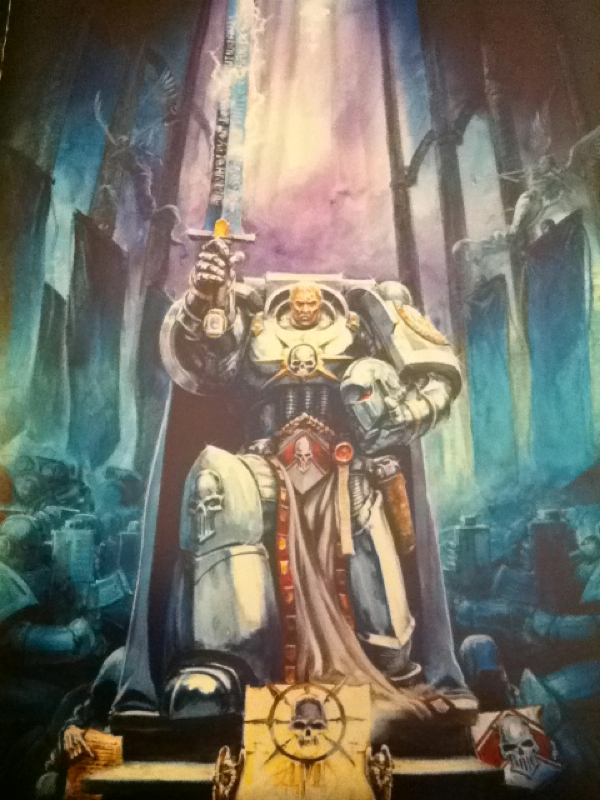
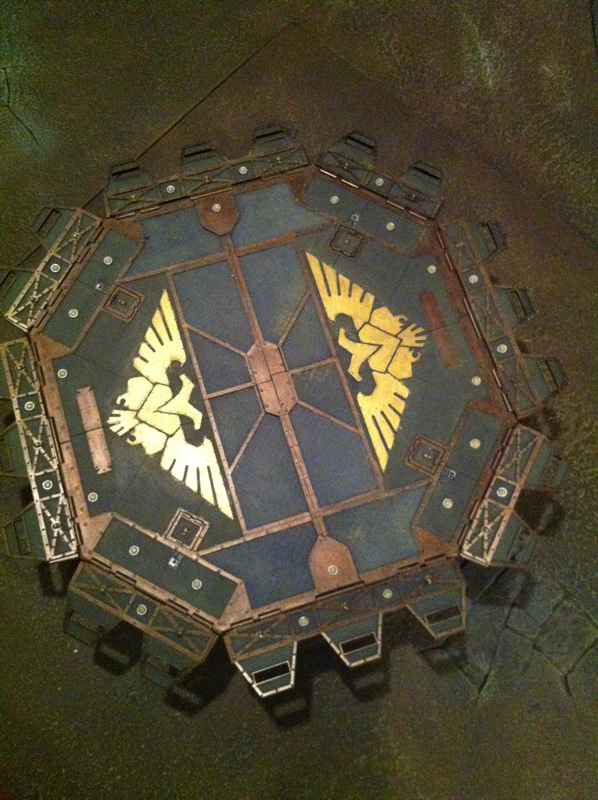
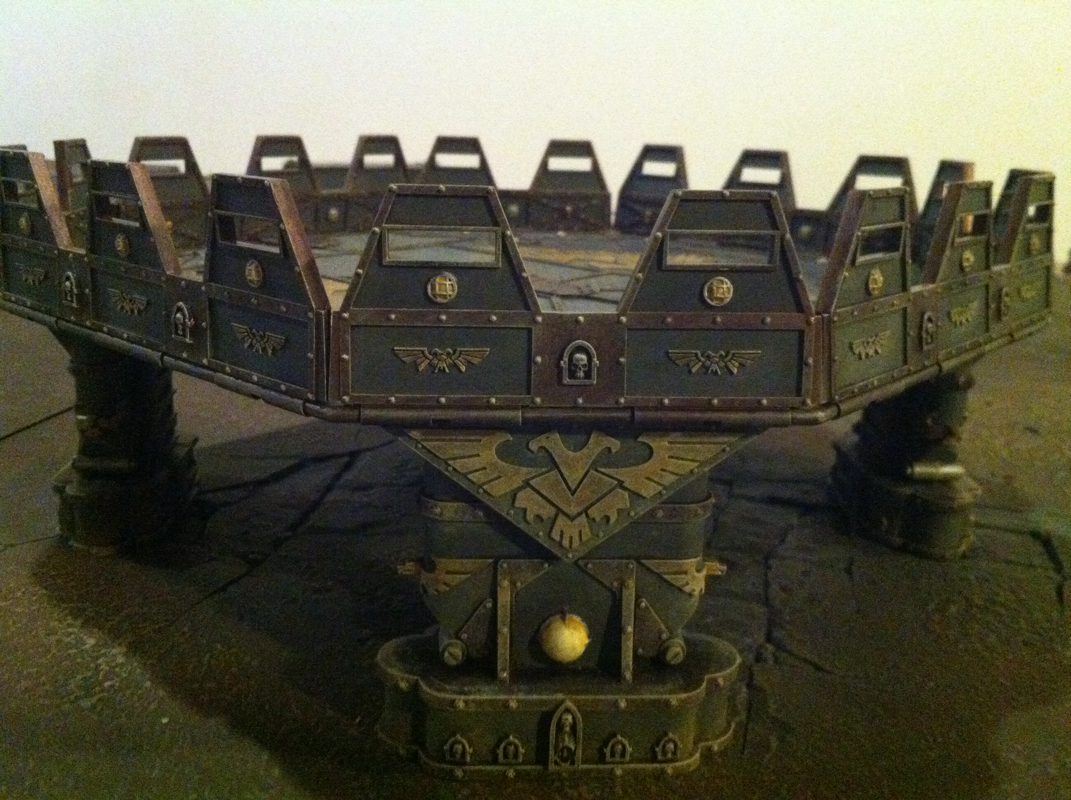
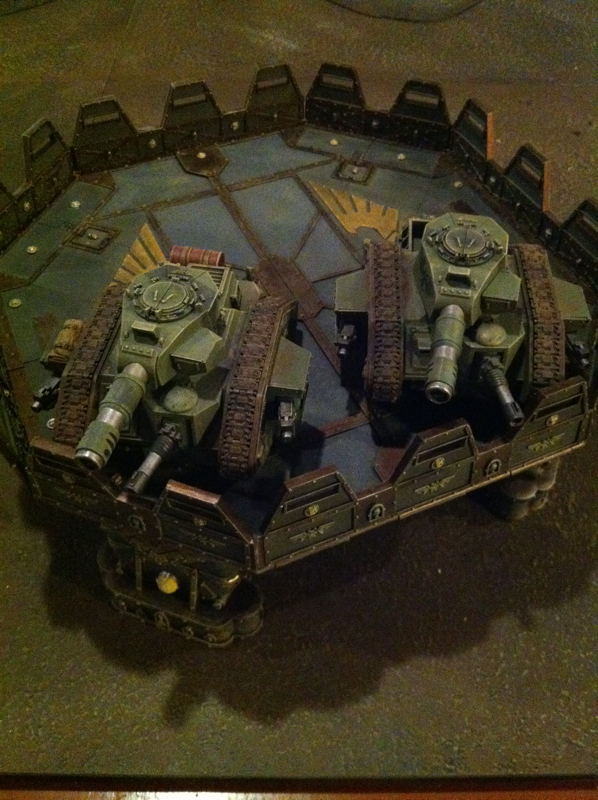

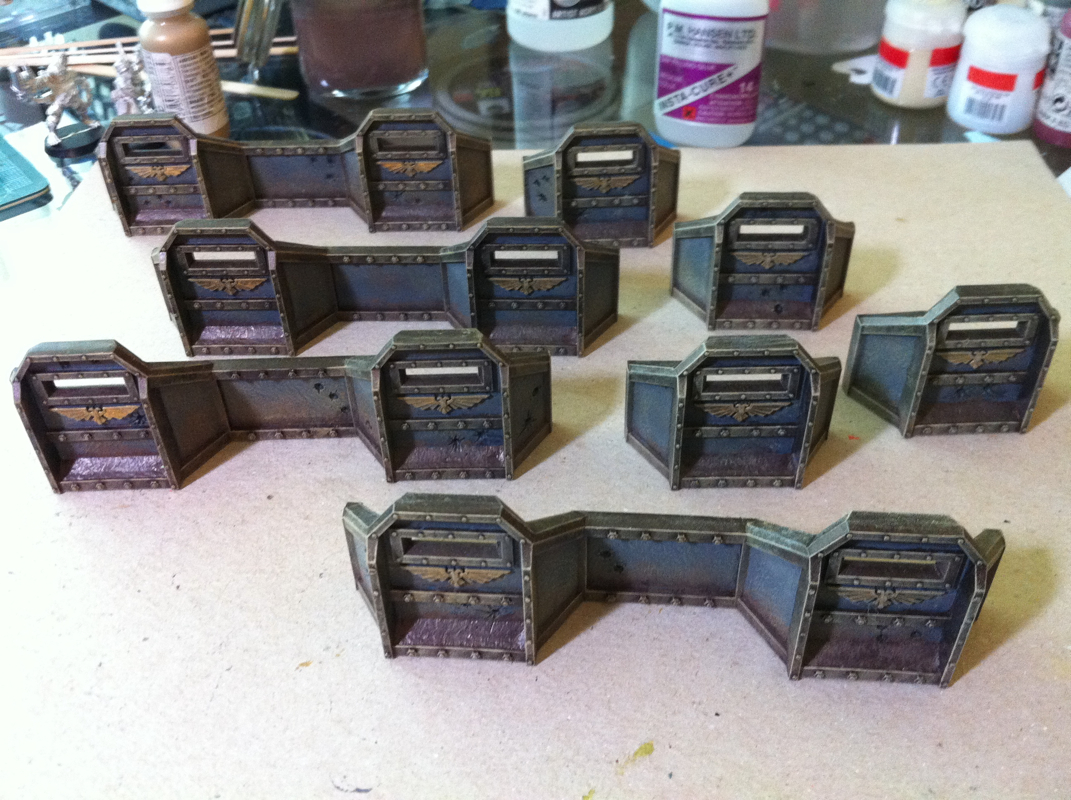
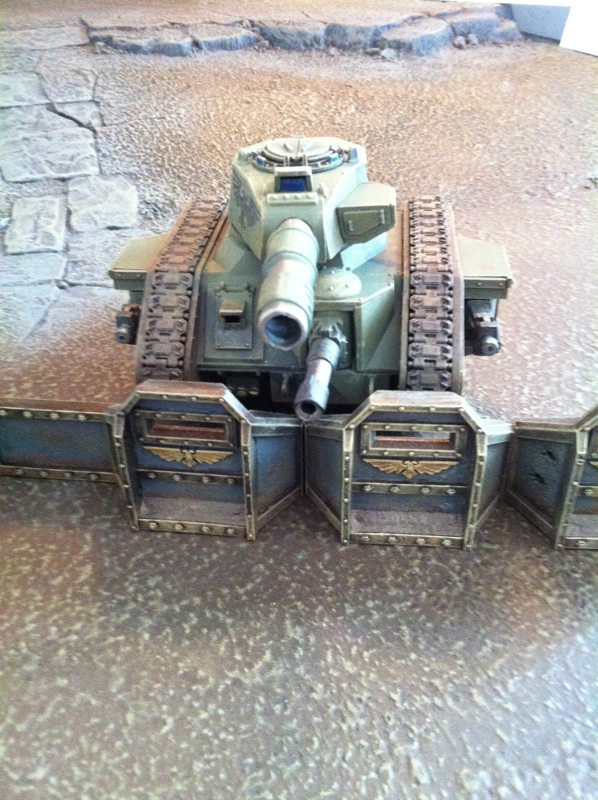

 RSS Feed
RSS Feed